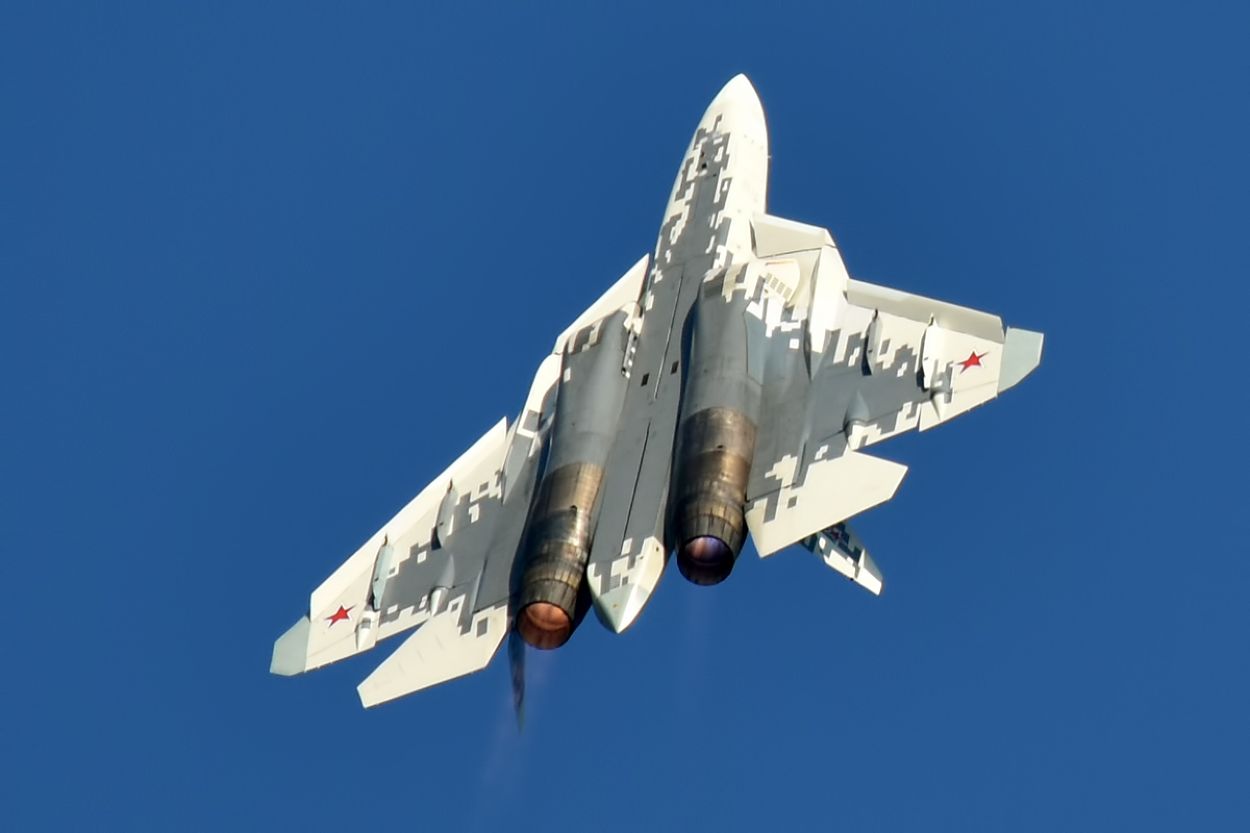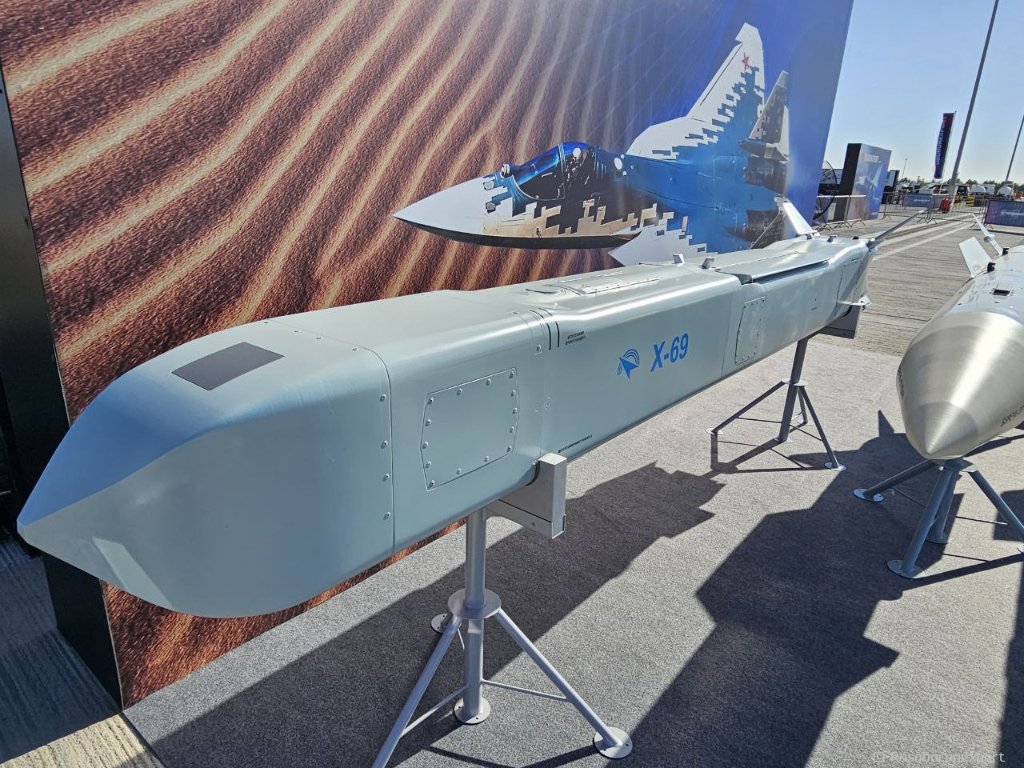While Russia has not deployed its state-of-the-art Su-57 fighter jet in combat in Ukraine, an intriguing development has surfaced: the Kh-69 high-precision weapon, originally designed for the Su-57, appears to have been used.
The revelation regarding the deployment of this high-precision weapon during the ongoing war in Ukraine came to light on February 17 when a Ukrainian military blogger shared a photo on the Telegram app, purportedly showing the wreckage of a Kh-69 missile, with one of its rear fins visible.
According to the caption accompanying the image, the missile was “downed” during a large-scale missile strike on February 7, 2024.
Interestingly, this coincides with reports from a Kyiv-based research institute claiming that Russia’s hypersonic Zircon cruise missile was also employed in attacks on Ukraine on the same day.
Reports circulating on social media suggest that three Kh-69 missiles were launched against Ukraine overnight on February 7-8, along with three Kh-59 standoff missiles.
I missed this, but apparently on 7 FEB 2024 Russia employed a Kh-69 ALCM for the first time. Originally offered as the Kh-59MK2, a heavily modernized Kh-59M derivative with DSMAC guidance, the concept evolved into the Kh-69 and was later offered as a standoff option for the Su-57 pic.twitter.com/Kvnzc126r1
— John Ridge 🇺🇸 🇺🇦 (@John_A_Ridge) February 16, 2024
However, Ukrainian defense forces managed to intercept and neutralize the majority of these missiles, with five of the six reportedly being shot down during attacks on regions including Poltava, Sumy, and Mykolaiv.
The Kh-69 is commonly linked to the Su-57 Felon fighter. However, it can be deployed from other Russian tactical aircraft like the MiG-29K, MiG-35, and Su-35, underscoring the versatility of this precision-guided munition.
The emergence of the Kh-69 in the Ukrainian conflict may not be as momentous as the purported deployment of the Zircon missile. Still, it serves as a notable indication of Russia’s increasing inclination to employ cutting-edge weaponry in active combat theaters.
This demonstration underscores a shift towards using newly developed and sophisticated armaments by Russian forces.
The UK Ministry of Defense also recently suggested that the Russians might leverage the current conflict as an opportunity to test a newly operational weapon system in a combat scenario.
Meanwhile, in addition to the Kh-69 and the Zircon, reports suggest that other recently developed Russian missiles have also been employed in the Ukrainian conflict.
One such example is the Grom tactical missile, which features advanced capabilities, including extended stand-off capability due to its pop-out wings.
Technical Specification of Kh-69 High-Precision Weapon
The journey of what is now known as the Kh-69 High-Precision missile began with its predecessor, the Kh-59MK2, developed by Russia’s Raduga company, a division of the Tactical Missile Corporation (KTRV).
Initially resembling the Kh-59MK, the Kh-59MK2 distinguished itself with an upgraded guidance system, featuring an inertial navigation system with GPS/GLONASS for mid-course updates and an electro-optical digital scene-matching area correlation (DSMAC) system for target approach, borrowed from the Kh-555 strategic cruise missile.
Marketed primarily for export, it aimed to attract international buyers, although its success remains unclear. In 2015, the Kh-59MK2 underwent a significant transformation, reemerging as the Kh-69, with enhancements including low-observable features and a redesigned body tailored for the Su-57’s weapons bay.
Despite these advancements, foreign sales were elusive. However, as Russia shifted its focus towards the procurement of the Su-57 fighter aircraft, Raduga took the opportunity to tailor the Kh-69 for domestic use, refining its design and capabilities to align with the requirements of the Su-57 program.

The Kh-69 is designed for precision strikes against hardened targets with a range exceeding 186 miles. It can be pre-programmed with target coordinates before flight or updated while airborne.

Weighing approximately 1,700 pounds, it can reach speeds of up to 621 miles per hour and is equipped with a penetration or cluster warhead option weighing up to 680 pounds.
Although specific details about its stealth capabilities remain unclear, it is designed to minimize radar detection and fit within the Su-57.
As for its capabilities, the Kh-69 missile has been likened to the Storm Shadow and its French counterpart, the SCALP EG, which typically have a range of around 155 miles.
Additionally, the Kh-69 is notably smaller than the Storm Shadow/SCALP EG, measuring around 13 feet 9 inches compared to 16 feet 9 inches, and carries about two-thirds of their payload.
Despite its compact dimensions, the Kh-69 stands out as a noteworthy advancement among Russia’s tactical air-launched munitions, especially compared to the makeshift glide bombs prevalent in current use.
With its improved precision, extended reach, and heightened resilience, the Kh-69 presents a substantial leap in capability. However, its enhanced capabilities come at a higher cost compared to other Russian weaponry.
- Contact the author at ashishmichel(at)gmail.com
- Follow EurAsian Times on Google News




